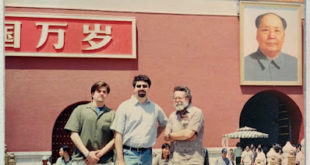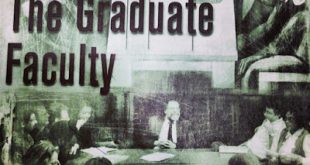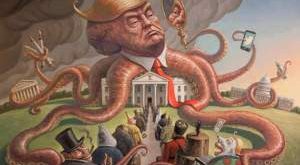Lance Taylor in Beijing (with me, center), 2001Full paper for download here. From Duncan Foley's recollection cited in the paper.Lance had what one might call a casual approach to every-day dress, though he appeared for public talks well turned out even with rather jaunty accessories. It was not unusual, however,for him to appear in his office in the working clothes of a Maine farmer. On some of these occasions, particularly when travel delays or cancellations disrupted work plans, I would...
Read More »Lance Taylor (1940-2022) and his legacy
With Lance in Beijing (2001)I took Lance’s macro class in the Fall of 1995 at the New School for Social Research (NSSR), and then was his Teaching Assistant for two years. The book we formally used was Income Distribution, Inflation and Growth: Lectures on Structuralist Macroeconomic Theory, in which the terms (not the concepts) for wage-led and profit-led economies were first used (at least that's what I think; profit-led does not appear in the index, I must note). But classes were based on...
Read More »The New School for Social Research at 100: A view from the Econ. Dept.
From a late 1990s catalogue; Lance Taylor (center), and also in no particular order and from what I can remember (Ellen Houston, Adalmir Marquetti, myself (with goaty on the left side), Margaret Duncan, Josh Bivens and Carlos Pinkusfeld (Orozco Room) The New School for Social Research was founded 100 years ago by a group of academics dissatisfied with the direction of American high education. Economics was central to the early history of the New School, and my brief, very incomplete,...
Read More »Demand Drives Growth all the Way
New paper by Lance Taylor, Duncan Foley and Armon Rezai. From the abstract: "A demand-driven alternative to the conventional Solow-Swan growth model is analyzed. Its medium run is built around Marx-Goodwin cycles of demand and distribution. Long-run income and wealth distributions follow rules of accumulation stated by Pasinetti in combination with a technical progress function for labor productivity growth incorporating a Kaldor effect and induced innovation. An explicit steady state...
Read More »Trump-Style Policies Will Deepen the “American Carnage”
By Lance TaylorPresident Trump, in his inaugural address and elsewhere, rightly says that over the decades since 1980 American household distributions of income and wealth became strikingly unequal. But if recent budget and legislative proposals from Trump and the House of Representatives come into effect, today’s distributional mess would become visibly worse.First, I will sketch how the mess happened, then I will propose some ideas about how it might be cleaned up. I will show that...
Read More »The “Natural” Interest Rate and Secular Stagnation: Loanable Funds Macro Models Don’t Fit Today’s Institutions or Data
By Lance TaylorCan America recover ideal rates of growth through interest-rate policies? This important analysis suggests that most economists misunderstand the issue. Updating Keynes, the analysis suggests that fiscal stimulus, labor union bargaining power, and more progressive income taxes are needed to support growth. (The article includes some algebra, which some readers may choose to skip.)The main points of this paper are that loanable-funds macroeconomic models with their “natural”...
Read More »The “Natural” Interest Rate and Secular Stagnation
New paper by Lance Taylor in Challenge Magazine. From the blurb: Can America recover ideal rates of growth through interest-rate policies? This important analysis suggests that most economists misunderstand the issue. Updating Keynes, the analysis suggests that fiscal stimulus, labor union bargaining power, and more progressive income taxes are needed to support growth. (The article includes some algebra, which some readers may choose to skip.) Read full paper here.
Read More »Lance Taylor on Loanable Funds and the Natural Rate
New paper on INET. Here is from Lance's conclusion: ... writing in the General Theory after leaving his Wicksellian phase, Keynes said that “... I had not then understood that, in certain conditions, the system could be in equilibrium with less than full employment….I am now no longer of the opinion that the concept of a ‘natural’ rate of interest, which previously seemed to me a most promising idea, has anything very useful or significant to contribute to our analysis (pp. 242-43).”...
Read More »Wealth Concentration, Income Distribution, and Alternatives for the USA
New paper by Lance Taylor, Özlem Ömer and Armon Rezai. From the abstract: US household wealth concentration is not likely to decline in response to fiscal interventions alone. Creation of an independent public wealth fund could lead to greater equality. Similarly, once-off tax/transfer packages or wage increases will not reduce income inequality significantly; on-going wage increases in excess of productivity growth would be needed. These results come from the accounting in a simulation...
Read More »Thirlwall à la Godley
Short note on Thirlwall's Law by Lance Taylor available here. As he notes on Thirlwall's Law: "Insofar as they [the conditions to generate it] are 'extreme,' the plausibility of (3) [Thirlwall's Law] is open to doubt," which is one of the points I raised in my recent debate with Jaime Ros. Causality here remains from exports to growth, which was reversed in Clavijo and Ros, but there is a healthy skepticism about the generality of the law.Arguably Godley had a version of Thirlwall's Law...
Read More » Heterodox
Heterodox





